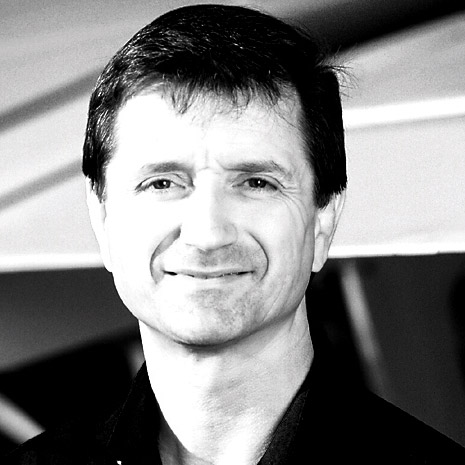Realistic simulations for departure-stall training
Any suggestions on getting through power-on stalls? I think the nose-high attitude is hard to get over. Also, do you have any suggestions on getting my head used to small G loads during entry to the departure stall?
Thanks,
Jim
Greetings Jim:
In real life, an actual departure stall doesn't have anywhere near the attitude that some pilots may experience during training. That's because real-to-life departure stalls are most often entered while the airplane is operating in the region of reversed command (behind the power curve). For instance, a pilot departing an airport with a high density altitude might lift off prematurely and attempt to climb out of ground effect with insufficient airspeed. The result? A departure stall at a relatively nose-low attitude. The same might be said of a pilot who attempts an abrupt go-around on final after letting his airspeed decay. Therefore, it's often best to simulate a departure stall as it's accidentally (and unfortunately) done in real life. Here's how to do it.
After making the required clearing turns, reduce power and slow the airplane to close to the power-off stall speed. Then apply climb power and raise the nose in preparation to stall. This would simulate a more realistic attitude and entry for the departure stall. You should feel no noticeable increase in G force during the entry to a departure stall if you do it correctly. In other words, you shouldn�t be halfway through a loop when the airplane stalls during departure-stall practice. If you enter the stall as I suggest, a gradual increase in back-pressure will slide the airplane further behind the power curve and result in a departure stall at a more nose-low (and more realistic) attitude.
Do I need my logbook?
Dear Rod:
Are student pilots required to have their logbook in their possession while flying solo?
Thanks,
Ray
Greetings Ray:
No, a student pilot need not have a logbook in his or her possession on all solo flights. The only time student pilots must have their logbook with them is during solo cross-country flights. It's necessary then because the logbook has the required authorized instructor clearances and endorsements.
Even though you didn't ask, the student is not required to have the logbook signed at each destination on solo cross-country flights. Years ago a pilot told me that a student, flying from San Jose to Livermore, California, on his first solo cross-country, approached him and asked for his signature as proof that he had actually landed at Livermore. He signed his name and then wrote, "It's a beautiful day here in Las Vegas." Perhaps the FAA knows that some pilots have an unusual sense of humor, thus the reason why a logbook signature is not required in these instances. Some flight instructors insist on the practice, however.
Open-book oral exam
Dear Rod,
I took my checkride a little over a year ago and at the time was told by my instructor that the oral portion of the practical test was an "open-book" test. In fact, I did use the federal aviation regulations, Aeronautical Information Manual, and Airport/Facility Directory as references to help answer a few of the questions. My friend expects to take his checkride very soon but has been told by his instructor that the oral is definitely not an "open-book" test. We've been unable to find a definitive answer that would explain the conflicting advice. Can you help?
Thanks,
R.R.
Greetings R.R.:
The oral and flight portions of the checkride are considered to be a practical test. This means that there are some instances, based on the examiner's discretion, where you would be expected to look at the books for an answer. A good example of this would be the use of performance and weight-and-balance charts. You are certainly not expected to compute this information from memory. On the other hand, if the examiner wanted to know how you would recover from a stall, you are not expected to look at the books to find this answer. This wouldn't be practical in the sense that you should have this information resident in your memory, not in your library.
Wheel landings - why?
Dear Rod:
Why is it that I need to do wheel landings to obtain a tailwheel endorsement, but I don't need to do them on the private pilot checkride according to the Practical Test Standards?
Thank you,
R.D.
Greetings R.D.:
Actually, you are indeed responsible for demonstrating wheel landings on the checkride. True, the PTS doesn't specifically state that a wheel landing demonstration is required on the checkride. Wheel landings, however, are normal part of tailwheel operations. This means that you are expected to be able to do wheel landings if asked by the examiner. Of course, if the examiner asks for a wheel landing, you shouldn't respond by saying, "OK, which wheel? Tailwheel? Right wheel? Steering wheel?" You want to pass the checkride, not cause the examiner to pass out on your checkride.
Special VFR in Class C
Dear Rod:
Say you are in Class C airspace, 9 nm out from the airport, at 8,000 feet msl. Can you get Special VFR to the airport? I have asked several people and get different answers. It's the lateral boundaries to the surface that are questionable. Does it mean the inner ring to the surface or does it mean the upside-down-cake 10-nm ring to the surface?
Sincerely,
Bobby
Greetings Bobby:
The SVFR clearance only applies to the lateral limits of the surface based (inner ring) airspace at altitudes below 10,000 feet. It doesn't apply to the outer ring of Class C airspace. Normally, nine nm is beyond the lateral limits of the Class C surface-based airspace, and no SVFR is permitted from this distance.
Rod Machado is a flight instructor, author, educator, and speaker. A pilot for 32 years and a CFI for 28, he has flown more than 8,000 hours and owns a Beech A36 Bonanza. Visit his Web site.



